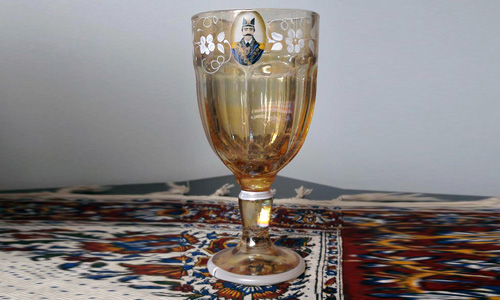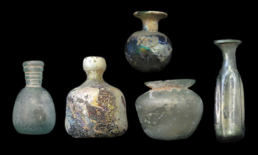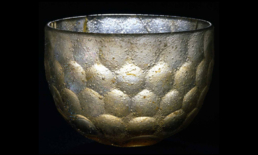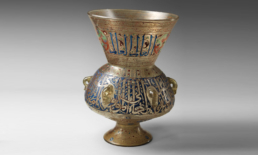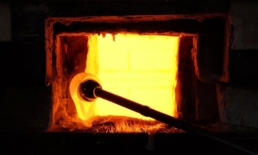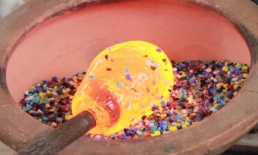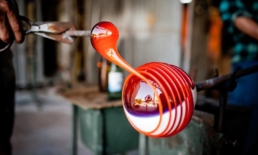Glass Art
Glass art is one of the oldest industries that human beings have ever worked on. Archaeological excavations at Marlik and Susa prove the prevalence of glass-making in ancient Iran (Persia). Roman Girshman, for instance, has obtained many glass bottles from the excavations at the Chogha zanbil Temple. (pic 1)
Aristophanes, a famous Greek writer who lived in the fifth century BC, also mentioned the Crystal Cups in the Achaemenid court in one of his plays. The glass pieces discovered in Persepolis also confirm what he said. Also, the discovery of glass objects from the Parthian and Sassanid dynasties indicates that glass art working was widespread in Iran. (pic 2)
With the advent of Islam, in addition to changing the overall shape of the glassware, painting and calligraphy on glass became commonplace with furnace colors and colored glazes, and a type of glass called “enameled glass” came into play. The Seljuk period (11th and 12th centuries) is considered to be the first period of flourishing glassware in post-Islamic Iran. From the Seljuk period to the Mongol era, beautiful glassware with various decorations was enameled, carved, or with additional motifs coming out of the glassworking furnace of Iranian cities. (pic 3)
Later, with the advent of the Safavid dynasty and special attention to the field, glass art workshops were built in Isfahan and Shiraz and artists were trained by a number of Venetian glassmakers. Currently, there are numerous glassworking workshops in Tehran, Isfahan, Shiraz, Meimand, Qamsar, and Kashan. In these workshops, there are several furnaces that, at very high temperatures, make a semi-melted mixture of silica and glass particles. (pic 4)
The glassmaker artists shape it by blowing and using various tools and then adorn it with multiple colors and carving. (pic 5 – pic 6)



